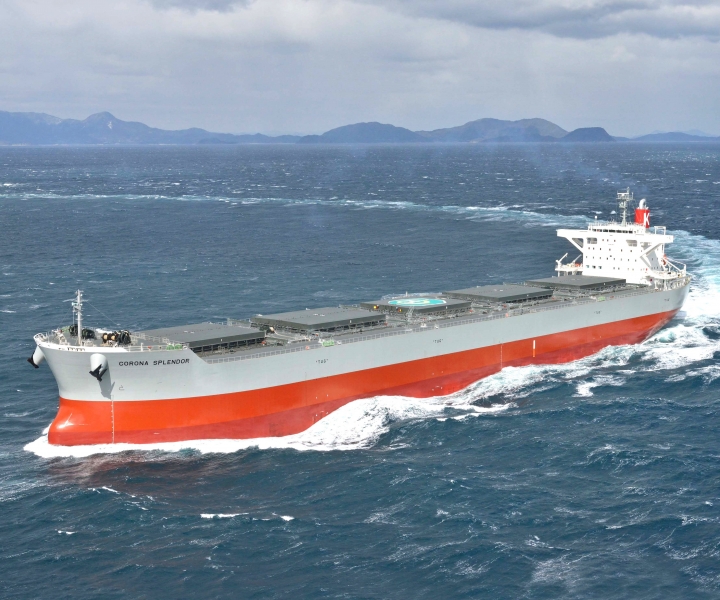Kawasaki Kisen Kaisha (K Line) and Nihon Shipyard (NSY) have entered into a contract for the construction of three next-generation, environmentally friendly post-Panamax bulkers.
The new ships will be a next-generation 92-type (92,000 deadweight tons) vessels, known as K Line’s Corona-series, which are wide-beam, shallow-draft coal carriers optimally designed for transportation of coal to coal-fired power plants in Japan. The vessel will have an LOA of 229m, a 38m beam, 19.65m of depth, a 14.20m full load draft and 92,000 MT of deadweight ton. It will also have 7/7 holds/hatches.
Phase 3 of the Energy Efficiency Design Index (EEDI) – which estimates ship CO2 emissions when carrying 1 ton of cargo for 1 mile – will require bunkers (no less than 20,000 deadweight tons), for which construction contracts will be concluded in 2025 or thereafter, to be 30% more efficient in CO2 emissions compared to the EEDI standards.
In pursuit of a further reduction in the environmental burden through greater fuel economy, the new ship is expected to achieve a 40% improvement in CO2 emissions efficiency based on NSY’s ship development, including the newest main engine and the adoption of energy-saving accessories. Moreover, the methanol-ready ship concept will be adopted to enable a shift toward methanol, a marine fuel with a low environmental footprint.
Under K Line Environmental Vision 2050, a long-term environmental guideline, K Line has set a goal of improving CO2 emissions efficiency by 50% and achieving net-zero GHG emissions by 2050. As part of its associated action plans, it plans to implement a shift such as new highly eco-friendly fuels, the use of wind power propulsion systems.
Going forward, K Line will continue to strive to contribute to sustainable economic and social development and enhance corporate value while actively and flexibly responding to customers’ needs, including environmental responses which are expected to grow, and preserving the environment through business activities based on the K Line Environmental Vision 2050.
For more key shipyards and shipbuilding updates from the electric and hybrid marine technology industry, click here.



